
The Communist Party of Australia (CPA), known as the Australian Communist Party (ACP) from 1944 to 1951, was an Australian communist party founded in 1920. The party existed until roughly 1991, with its membership and influence having been in a steady decline since its peak in 1945. Like most communist parties in the West, the party was heavily involved in the labour movement and the trade unions. Its membership, popularity and influence grew significantly during most of the interwar period before reaching its climax in 1945, where the party achieved a membership of slightly above 22,000 members. Although the party did not achieve a federal MP, Fred Paterson was elected to the Parliament of Queensland at the 1944 state election. He won re-election in 1947 before the seat was abolished. The party also held office in over a dozen local government areas across New South Wales and Queensland.
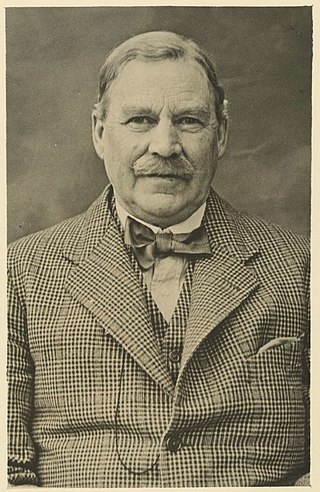
William Henry Ogilvie was a Scottish-Australian narrative poet and horseman, jackaroo, and drover, and described as a quiet-spoken handsome Scot of medium height, with a fair moustache and red complexion. He was also known as Will Ogilvie, by the pen names including 'Glenrowan' and the lesser 'Swingle-Bar', and by his initials, WHO.

Dame Mary Jean Gilmore was an Australian writer and journalist known for her prolific contributions to Australian literature and the broader national discourse. She wrote both prose and poetry.
Alan David Lee is an Australian actor.

Point Lookout is a headland, small coastal town and locality on the eastern coast of North Stradbroke Island (Minjerribah), Redland City, Queensland, Australia.

The Australian Institute of Architects, officially the Royal Australian Institute of Architects, is Australia's professional body for architects. Its members use the post-nominals FRAIA (Fellow), ARAIA and RAIA. The Institute supports 14,000 members across Australia, including 550 Australian members who are based in architectural roles across 40 countries outside Australia. SONA is the national student-membership body of the Australian Institute of Architects. EmAGN represents architectural professionals within 15 years of graduation, as part of the Australian Institute of Architects.

Drought in Australia is defined by the Australian Bureau of Meteorology as rainfall over period greater than three-months being in the lowest decile of what has been recorded for that region in the past. This definition takes into account that drought is a relative term and rainfall deficiencies need to be compared to typical rainfall patterns including seasonal variations. Specifically, drought in Australia is defined in relation to a rainfall deficiency of pastoral leases and is determined by decile analysis applied to a certain area. Note that this definition uses rainfall only because long-term records are widely available across most of Australia. However, it does not take into account other variables that might be important for establishing surface water balance, such as evaporation and condensation.

Alfred George Stephens, commonly referred to as A. G. Stephens, was an Australian writer and literary critic, notably for The Bulletin. He was appointed to that position by its owner, J. F. Archibald in 1894.

Dad Rudd, M.P. is a 1940 comedy that was the last of four films made by Ken G. Hall starring Bert Bailey as Dad Rudd. It was the last feature film directed by Hall prior to the war and the last made by Cinesound Productions, Bert Bailey and Frank Harvey.
Come Up Smiling is a 1939 Australian comedy film starring popular American stage comedian Will Mahoney and his wife Evie Hayes. It was the only feature from Cinesound Productions not directed by Ken G. Hall.
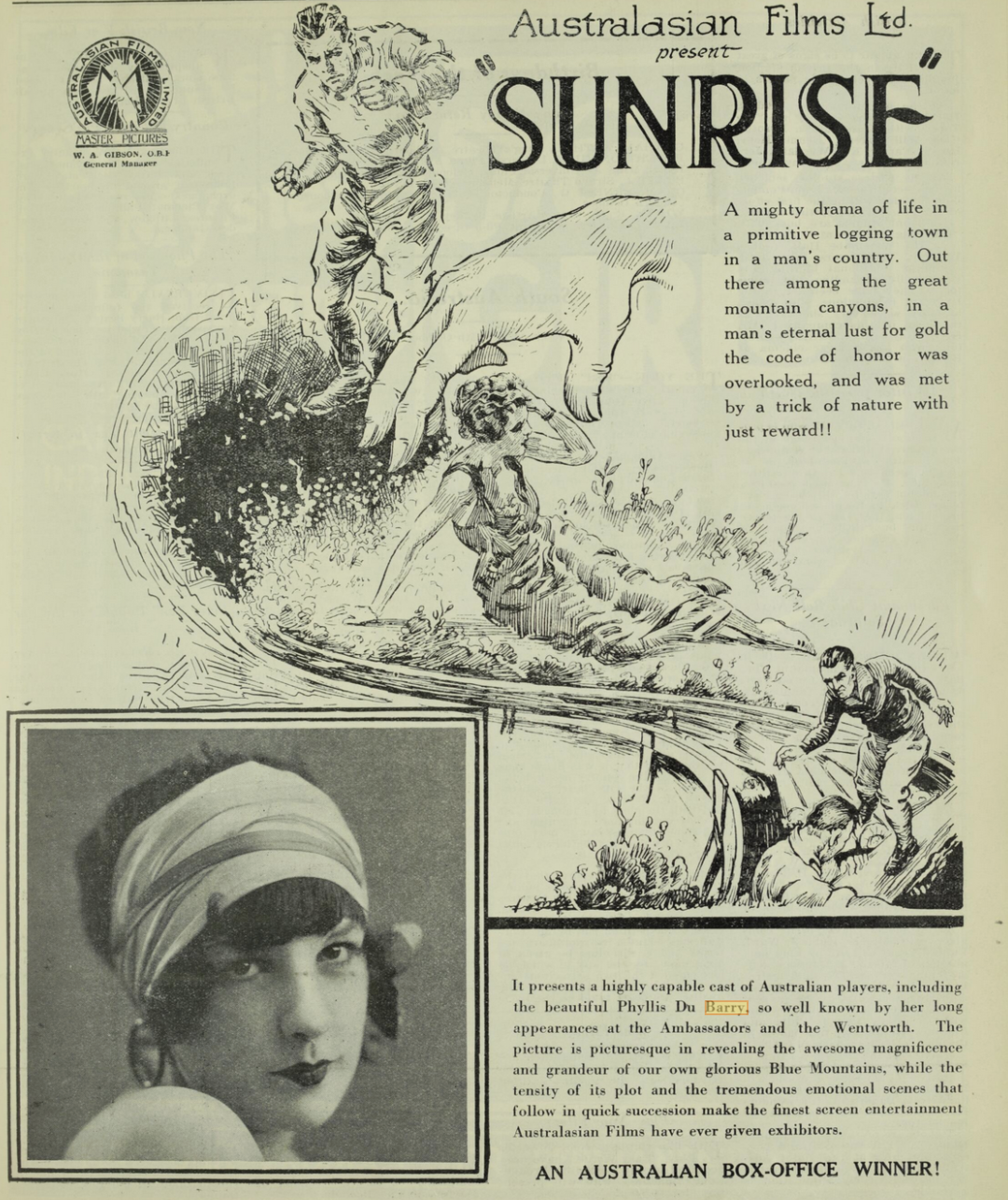
Sunrise is a 1926 Australian silent film co-directed by Raymond Longford, who took over during filming.
The Tenth Straw is a 1926 Australian silent film heavily inspired by the novel For the Term of His Natural Life. Little is known of the director and cast, but most of the film survives today.
Hemiaspis damelii is a species of venomous snake in the family Elapidae. It is a relatively small species of elapid with a mean snout-vent length (SVL) of 42.6 to 60 cm. The species is endemic to eastern Australia and is most commonly found across central inland New South Wales through to the interior of south-eastern Queensland. Common names for this species include ngabi, grey snake and Dämel's Snake. The specific name, damelii, is in honor of German entomologist Edward Dämel, who collected Australian specimens for Museum Godeffroy.
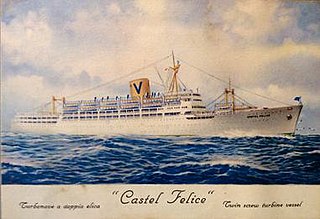
Castel Felice was a SITMAR Line liner.
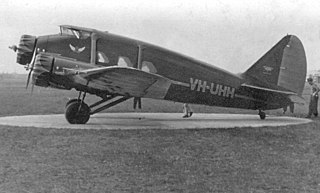
The 1937 Airlines of Australia Stinson crash was an accident which occurred on 19 February 1937. The Airlines of Australia Stinson Model A airliner disappeared during a flight from Brisbane to Sydney, carrying five passengers and two pilots. Both pilots and two passengers were killed in the crash. One of the surviving passengers died while attempting to bring help to the other survivors.
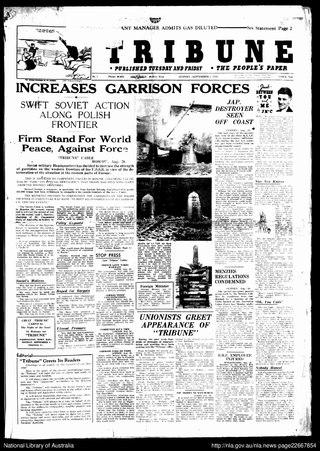
Tribune was the official newspaper of the Communist Party of Australia. It was published by the Central Committee of the Communist Party of Australia from 1939 to 1991. Initially it was subtitled as Tribune: The People's Paper. It was also published as the Qld Guardian, Guardian (Melbourne), Forward (Sydney). It had previously been published as The Australian Communist, (1920-1921) The Communist, (1921-1923) and the Workers' Weekly (1923-1939).
Arthur John Mason was an Australian organist and journalist, remembered as Sydney City Organist from 1901 to 1907, when he moved to London as correspondent for the Sydney Morning Herald. He was a son of George Birkbeck Mason, musician and entrepreneur, and grandson of Abraham John Mason, wood engraver of London and New York.
David John Fullard was a Welsh tenor singer with the Covent Garden Opera company, who appeared in BBC concerts and on several recordings. He had a considerable career playing Gilbert and Sullivan roles in Australia between 1940 and 1955.
Viola Wilson was a Scottish singer, the leading soprano for J. C. Williamson's Gilbert and Sullivan company in Australia during World War II. She married the widowed theatre businessman Frank S. Tait, later Sir Frank.












